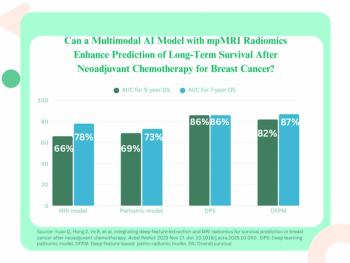
Three-D imaging data aid neuronavigation
Diagnostic radiologists may be growing familiar with interactive 3D imaging tools, but surgeons' acceptance has been slower. Further use of 3D imaging in the operating room is far from inevitable if surgeons remain unconvinced of the need for computerized anatomic reconstructions. Speakers at the CARS meeting effectively countered such skepticism by highlighting practical uses of 3D imaging data in neurosurgery.
Diagnostic radiologists may be growing familiar with interactive 3D imaging tools, but surgeons' acceptance has been slower. Further use of 3D imaging in the operating room is far from inevitable if surgeons remain unconvinced of the need for computerized anatomic reconstructions. Speakers at the CARS meeting effectively countered such skepticism by highlighting practical uses of 3D imaging data in neurosurgery.
Dr. Steffen Rosahl, vice chair of neurosurgery at Albert-Ludwigs University in Freiburg, Germany, outlined three key principles for making 3D imaging data sets a core part of intracranial neuronavigation.
First, the "less is more" principle should be upheld, he said. While software packages may be capable of reconstructing an entire brain in exquisite detail, information irrelevant to the task in hand should be omitted from guiding images.
Volumetric views should be translucent, enabling neurosurgeons to view their approach and the surgical target in a single 3D image, Rosahl said. Finally, relevant functional information should be highlighted.
While such advice might be considered common sense, few commercially available 3D navigation packages include all these features, although research is progressing, he said.
"Most of the systems use tri-axial images, and they rely on surface renderings. What you want to incorporate in these systems is volumetric imaging. You want to get an image that matches not only the surface structures but also the deeper structures," he said.
The use of diffusion tensor imaging data to identify white matter tracts can aid neurosurgical planning, said Dr. Christopher Nimsky, an associate professor of neurosurgery at the University of Erlangen-Nuremberg in Germany. Accurate identification of the pyramidal tract, for example, ensures that patients undergoing brain tumor resections do not lose motor function.
Inclusion of DTI data in a 3D navigation system should allow surgeons to monitor their proximity to major white matter tracts. Practitioners must be aware, however, that these structures can move during surgery, Nimsky said. Neurosurgeons at Erlangen perform intraoperative and preoperative MR imaging to obtain an accurate representation of fiber tract positioning. Both acquisitions are performed on a 1.5T scanner.
Future work will include assessment of appropriate surgical safety margins, given the uncertainties in fiber tract representation on 3D images, Nimsky said.
"Possible brain shift to major white matter tracts during surgery has to be taken into account," he said.
Newsletter
Stay at the forefront of radiology with the Diagnostic Imaging newsletter, delivering the latest news, clinical insights, and imaging advancements for today’s radiologists.




























